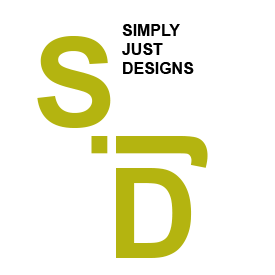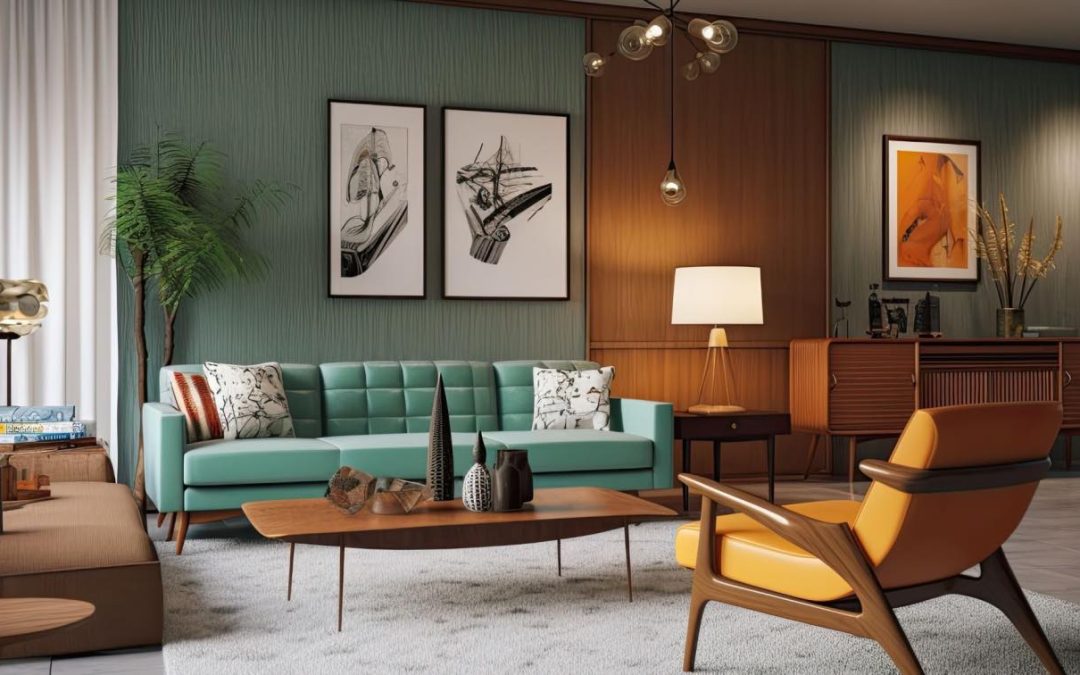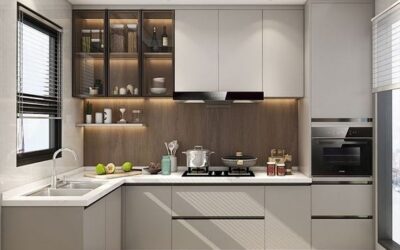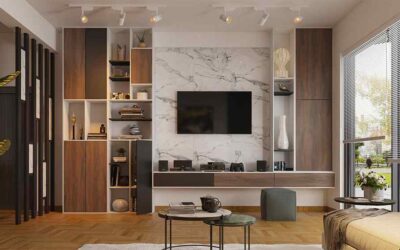Mid-century modern interior design, a timeless and influential aesthetic, emerged as a distinctive style during the mid-20th century, roughly spanning from the 1930s to the 1960s. It embodies clean lines, minimalism, and a seamless marriage of form and function. Furniture and architectural elements are characterized by straight lines, yet organic shapes and curves are also embraced. This style seeks to create a balance between modern innovation and a connection to the natural world. The use of natural materials like wood, leather, and stone is a hallmark of mid-century modern interiors, contributing to a warm and inviting atmosphere. Bold and vibrant colours, ranging from earthy tones to more daring hues like orange and turquoise, punctuate a neutral palette, infusing spaces with energy and personality.
Key Characteristics of Mid Century Modern Design
Mid Century Modern design is a distinct and influential style that emerged in the mid-20th century, capturing the essence of the post-World War II era. This design movement is characterized by several key features that set it apart and contribute to its enduring popularity. Let’s explore the fundamental characteristics of Mid Century Modern design:
1.Clean Lines and Minimalism:
The hallmark of Mid Century Modern design is its emphasis on clean, straight lines. Furniture, architecture, and decor feature sleek, uncluttered lines that create a sense of simplicity and sophistication. Minimalistic principles guide the design, avoiding unnecessary ornamentation. Furnishings and architectural elements feature straight edges and angular shapes.
2.Embracing Functionality:
Mid Century Modern design values form and function equally. Furniture and architectural elements are designed with a purpose, often blurring the lines between art and utility. Practicality is a key consideration, with pieces serving a functional role while maintaining an aesthetic appeal.
3.Connection with Nature:
Mid Century Modern homes are designed to seamlessly integrate with the natural environment. Large windows, sliding glass doors, and open floor plans bring the outdoors inside, fostering a harmonious relationship with nature. This connection is emphasized by the use of natural materials such as wood and stone.
4.Bold Colors and Contrasts:
While the overall color palette tends to be neutral, Mid Century Modern design isn’t afraid of bold splashes of color. Vibrant hues such as mustard yellow, avocado green, and orange are often used alongside neutral tones. High-contrast color combinations, such as black and white, contribute to the visual interest of the space.
5.Iconic Mid Century Modern Furniture Pieces:
The era gave rise to iconic furniture pieces that are synonymous with Mid Century Modern design. Examples include the Eames Lounge Chair, Saarinen Tulip Table, and the Egg Chair. These pieces often feature clean lines, organic shapes, and innovative use of materials.
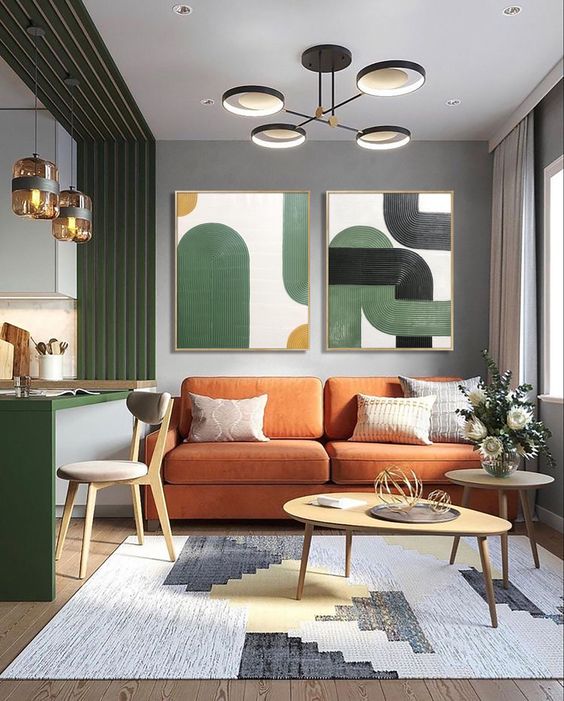
Source: etsy.com
6.Geometric Patterns:
Geometric shapes and patterns play a significant role in Mid Century Modern design. From hexagonal tiles to bold geometric prints on upholstery and wallpaper, these patterns add visual interest and a touch of playfulness to the clean lines of the overall design.
7.Architectural Elements: Open Floor Plans:
Mid Century Modern homes typically feature open floor plans, eliminating unnecessary walls and partitions. This design choice creates a sense of spaciousness and allows for a seamless flow between different areas of the home. The open layout enhances the social aspect of living spaces.
8.Large Windows and Natural Light:
Abundant natural light is a defining feature of Mid Century Modern interiors. Expansive windows, often floor-to-ceiling, allow sunlight to flood the space. This not only creates a bright and airy atmosphere but also reinforces the connection between the indoor and outdoor environments.
9.Textured Materials:
Mid Century Modern design incorporates a variety of textures to add depth and interest. Common materials include wood, leather, metal, and glass. These textures are often juxtaposed to create a rich sensory experience within the space.
10.Asymmetry and Organic Forms:
While clean lines are a key feature, Mid Century Modern design also embraces asymmetry and organic forms. Furniture and decor may feature unconventional shapes and arrangements, adding an element of dynamism to the overall aesthetic.
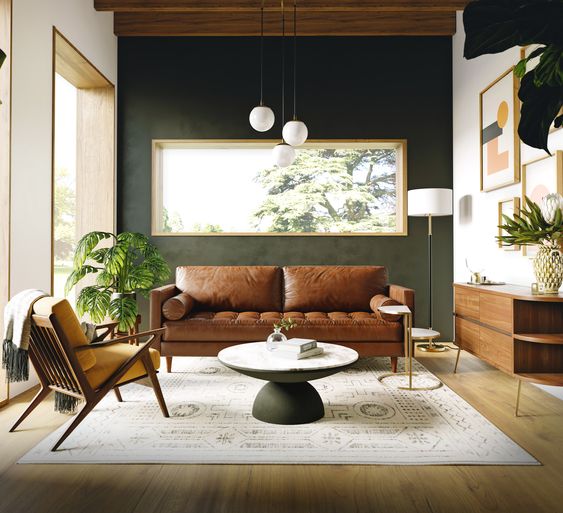
Source: joybird.com
Furniture that Defines the Era of mid century modern
Get Free Design
Mid Century Modern furniture is renowned for its iconic designs that have left an indelible mark on the world of interior design. These pieces, originating from the mid-20th century, continue to be cherished for their innovative craftsmanship, sleek lines, and timeless appeal. Let’s explore some of the most iconic furniture pieces that define the era of Mid Century Modern design:
1.Eames Lounge Chair and Ottoman:
Designed by Charles and Ray Eames in 1956, the Eames Lounge Chair and Ottoman epitomize Mid Century Modern luxury. With their molded plywood shells, plush leather upholstery, and distinctive profile, these pieces have become synonymous with both comfort and style.
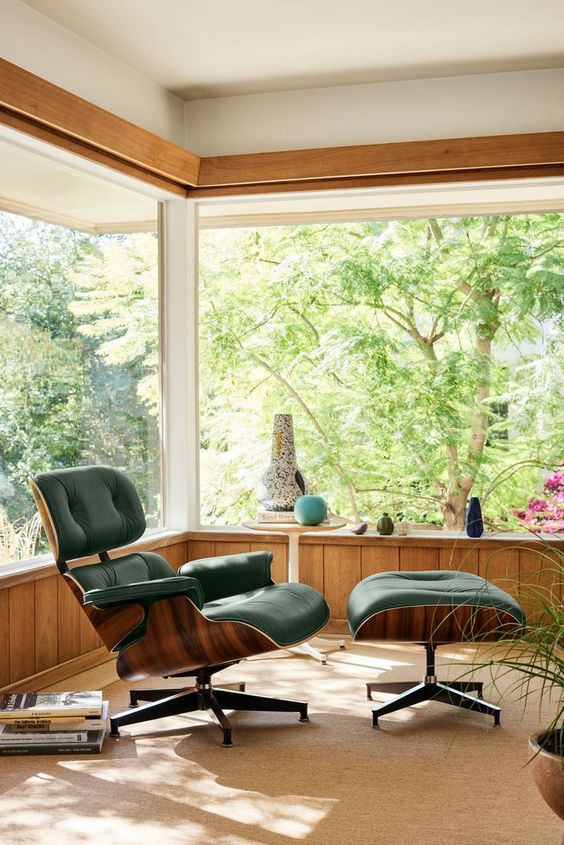
Source: pinterest.com
2.Saarinen Tulip Table and Chairs:
Created by Eero Saarinen in the 1950s, the Tulip Table and Chairs feature a strikingly modern design. The table boasts a single pedestal base and a sleek, minimalist silhouette. The chairs, with their organically shaped seats, complement the table’s aesthetic, creating an iconic dining set.
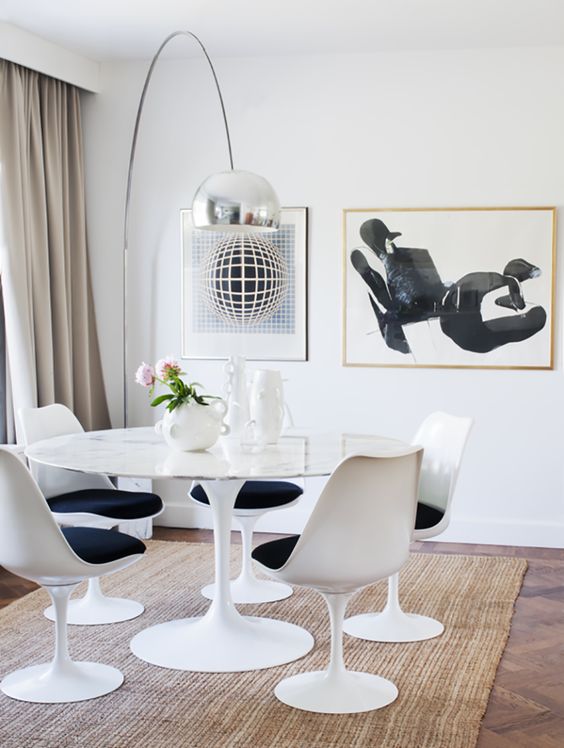
Source: camillestyles.com
3.Wegner CH07 Shell Chair:
Hans J. Wegner’s Shell Chair, designed in 1963, is a prime example of Danish Modern design. The chair’s curvaceous molded plywood seat and three-legged structure reflect both comfort and elegance, making it a hallmark of Mid Century Modern seating.
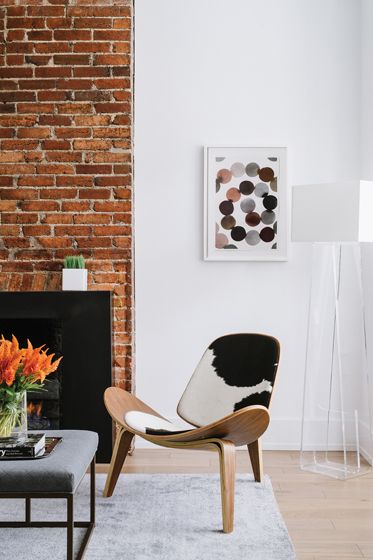
Source: homeanddesign.com
4.Noguchi Coffee Table:
Isamu Noguchi’s Noguchi Coffee Table, designed in 1944, is a sculptural masterpiece. The table features a glass top resting on two smoothly sculpted wooden legs, creating a harmonious blend of form and function that defines Mid Century Modern living spaces.
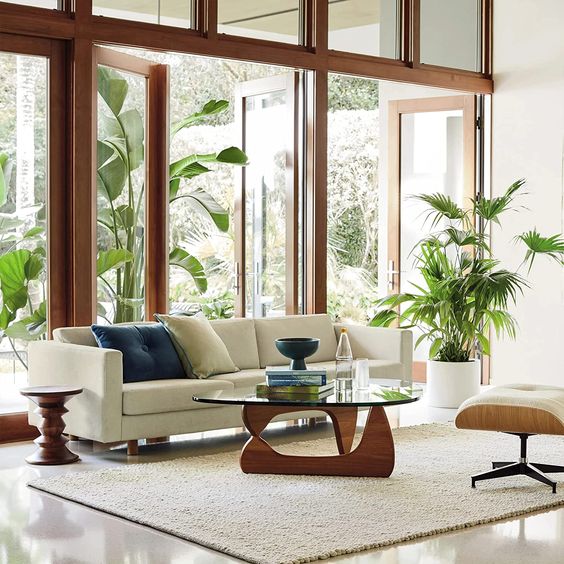
Source: amzn.co
5.Barcelona Chair and Ottoman:
Ludwig Mies van der Rohe and Lilly Reich designed the Barcelona Chair and Ottoman for the German Pavilion at the 1929 International Exposition. However, its minimalist design and luxurious leather upholstery have made it an enduring symbol of Mid Century Modern elegance.
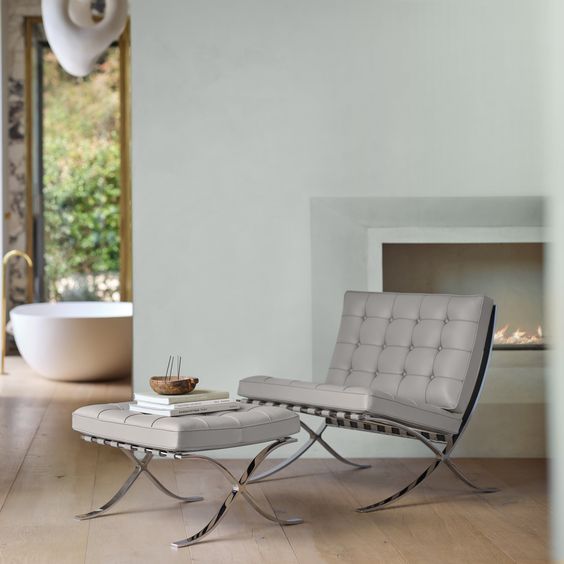
Source1; 2modern.com
6.Bertoia Diamond Chair:
Harry Bertoia’s Diamond Chair, created in 1952, is a testament to the beauty of metalwork in Mid Century Modern design. Its sculptural form, crafted from welded steel rods, provides a light and airy aesthetic, offering a contemporary seating solution.
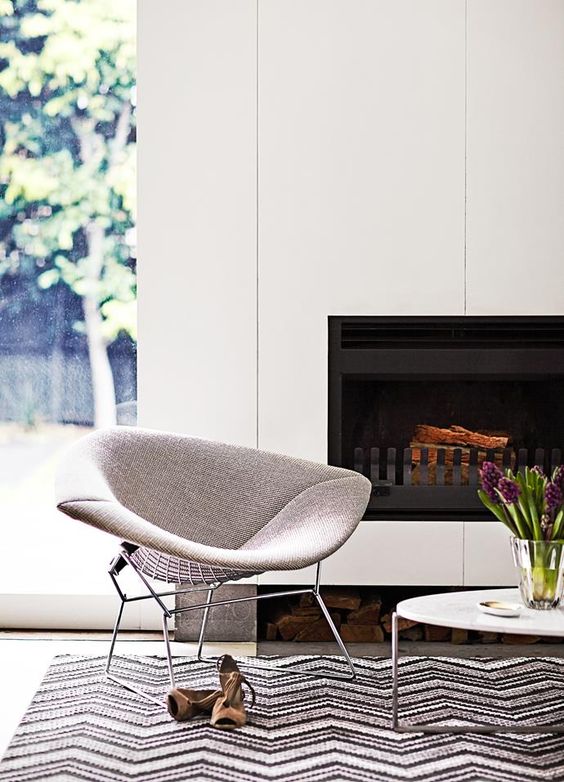
Source: homestolove.com
7.George Nelson Marshmallow Sofa:
George Nelson’s Marshmallow Sofa, designed in 1956, is an unconventional and playful piece that challenges traditional sofa design. Comprising a series of circular cushions supported by a steel frame, this sofa exemplifies the Mid Century Modern spirit of innovation.
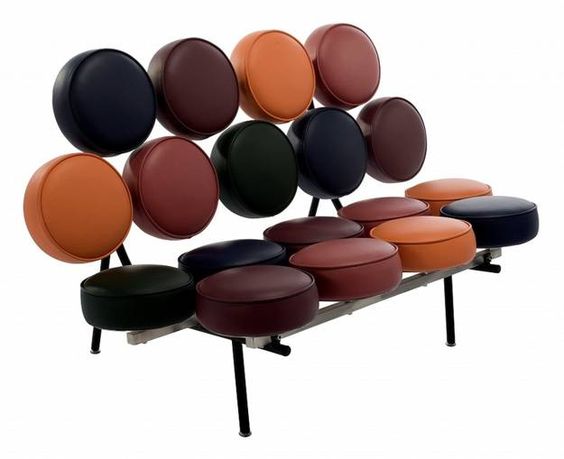
Source: lushome.com
8.Eames Molded Plastic Chair:
Another iconic creation by Charles and Ray Eames, the Molded Plastic Chair (1950) showcases the duo’s expertise in using innovative materials. The chair’s organic shape, molded from fiberglass or plastic, became a symbol of Mid Century Modern design.
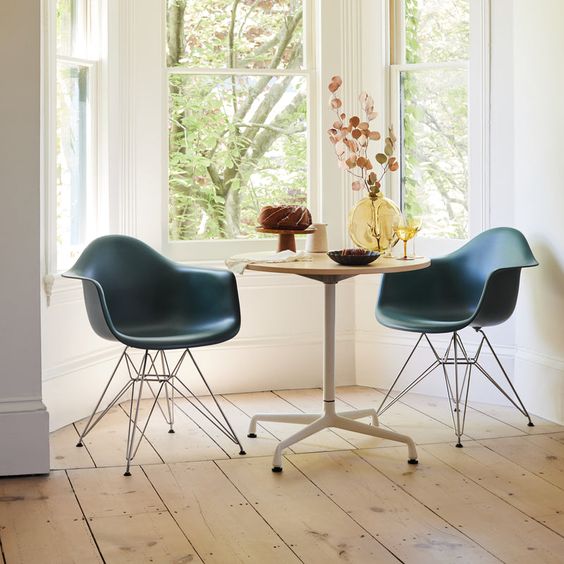
Source: 2modern.com
9.Herman Miller Credenza:
The Herman Miller Credenza, designed by George Nelson in the 1950s, is a timeless storage solution. Its clean lines, combination of wood and metal, and meticulous craftsmanship make it a staple in Mid Century Modern interiors.
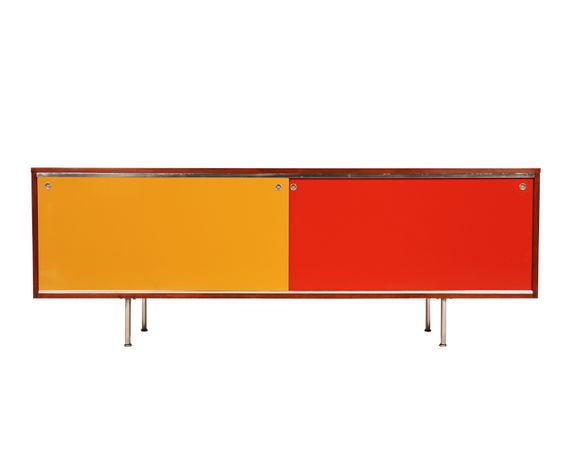
Source: danishmodernla.com
10.Arco Floor Lamp:
Achille and Pier Giacomo Castiglioni’s Arco Floor Lamp, created in 1962, is an iconic lighting fixture. The lamp’s sleek stainless steel arch and marble base exemplify Mid Century Modern design’s emphasis on both functionality and aesthetic appeal.
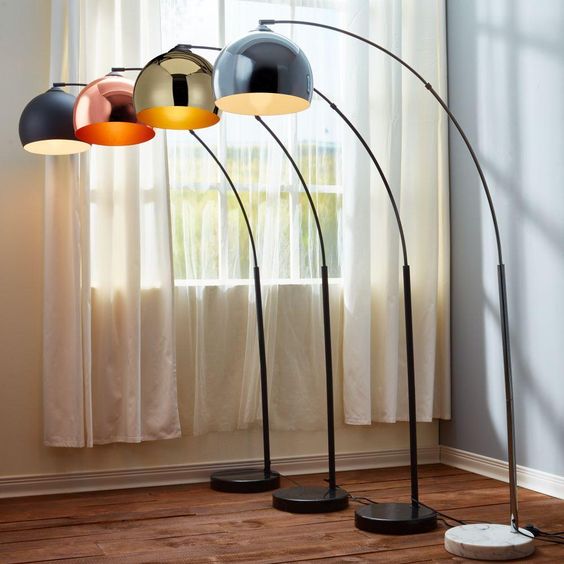
Source: lostland.co.uk
11.Egg Chair:
Designed by Arne Jacobsen in 1958 for the Radisson Blu Royal Hotel in Copenhagen, the Egg Chair is a sculptural masterpiece. Its cocoon-like shape and swiveling base make it a symbol of Mid Century Modern comfort and innovation.
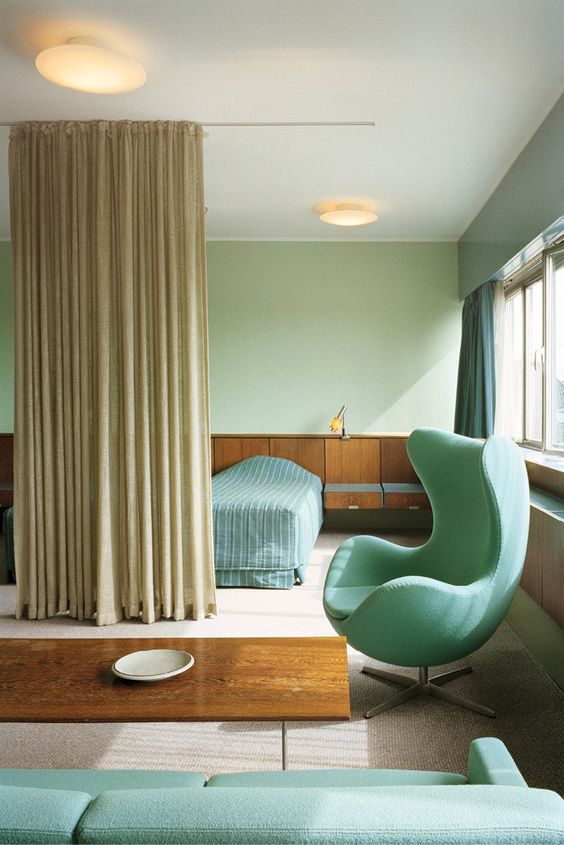
Source: architecturaldigest.com
12.Eames Wire Chair:
Charles and Ray Eames extended their design prowess to the Eames Wire Chair (1951). The chair’s intricate wire mesh design, combined with an organically shaped seat, showcases the Eames’ commitment to experimentation and style.
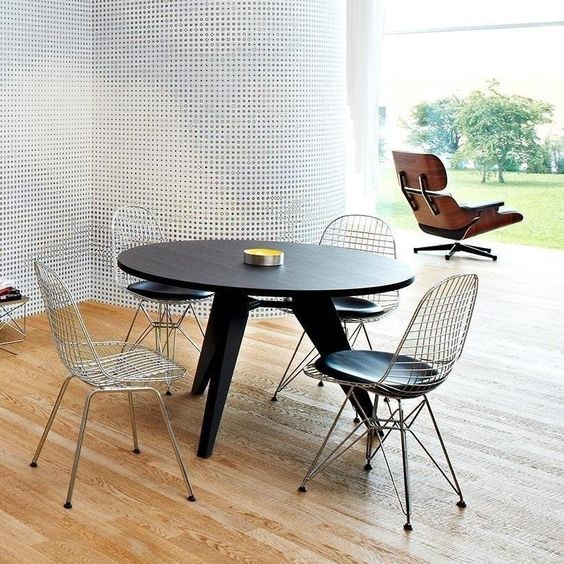
Source: paris-sete.com
Color Palette and Textures of mid century modern
The color palette and textures of Mid Century Modern design are crucial elements that contribute to the style’s distinctive and timeless aesthetic. Characterized by a harmonious blend of warm and cool tones, along with the strategic use of textures, Mid Century Modern interiors create a visually engaging and inviting atmosphere. Let’s explore the key aspects of the color palette and textures in Mid Century Modern design:
Color Palette:
1.Neutral Foundations:
Mid Century Modern interiors often start with neutral foundations. Whites, creams, and light grays serve as backdrop colors for walls, ceilings, and larger furniture pieces. These neutral tones create a sense of openness and allow other elements to stand out.
2.Earthy Hues:
To add warmth and a connection to nature, Mid Century Modern design incorporates earthy tones. Warm browns, beiges, and muted greens evoke a sense of tranquility and contribute to the organic feel of the space.
3.Bold Accent Colors:
While the overall palette leans towards neutrals, Mid Century Modern interiors embrace bold accent colors. Mustard yellow, avocado green, teal, and orange are common choices for furniture, decor, and accent walls. These pops of color add vibrancy and playfulness to the design.
4.Contrasting Combinations:
High-contrast color combinations, such as black and white or deep brown and cream, are prevalent in Mid Century Modern design. These pairings create visual interest and emphasize clean lines and geometric shapes.
5.Teak Wood Finishes:
The use of teak wood is a signature feature in Mid Century Modern design. The warm, honey-toned finish of teak adds richness to furniture pieces and complements the overall color scheme, creating a cohesive and inviting environment.
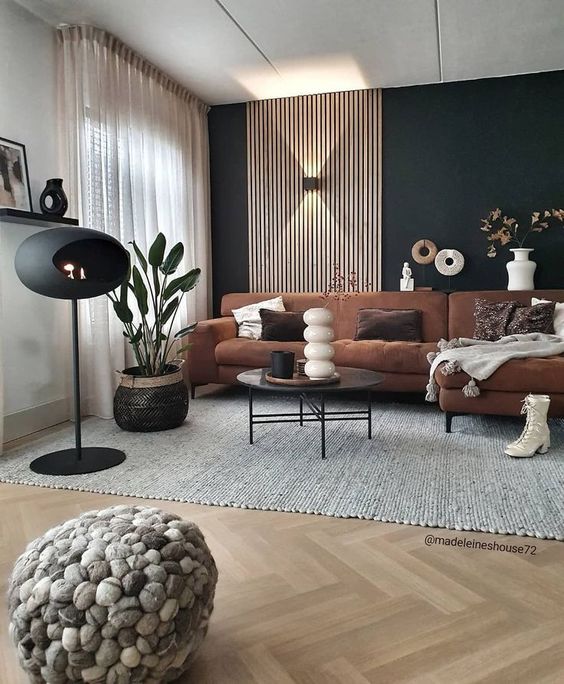
Source: amazon.com
Textures:
1.Wood Grain Finishes:
Mid Century Modern design embraces the natural beauty of wood. Furniture pieces often feature exposed wood grain finishes, especially in teak, walnut, and oak. These textures add warmth and a sense of craftsmanship to the space.
2.Leather Upholstery:
Leather is a popular choice for upholstery in Mid Century Modern furniture. The smooth, luxurious texture of leather contributes to the sophistication of the design. Common leather colors include black, brown, and cognac.
3.Woven Textures:
Woven textures, such as rattan and cane, make frequent appearances in Mid Century Modern design. These materials are used for chairs, light fixtures, and decorative elements, providing a tactile and visually interesting layer to the design.
4.Glass Surfaces:
Glass is employed for tabletops, lighting fixtures, and accessories, introducing a sleek and reflective texture. Glass surfaces contribute to the overall transparency and lightness associated with Mid Century Modern interiors.
5.Metal Accents:
Metal accents, often in the form of chrome, brass, or copper, add a touch of glamour to Mid Century Modern design. Whether in furniture legs, lighting fixtures, or hardware, these metallic textures enhance the overall aesthetic.
6.Geometric Patterns:
Geometric patterns, both in textiles and wall coverings, are a distinctive texture in Mid Century Modern interiors. Bold and repetitive patterns, such as chevrons, triangles, and circles, add visual interest without overwhelming the space.
7.Terrazzo Flooring:
Terrazzo flooring, with its speckled appearance, is a textured flooring option that complements Mid Century Modern design. It adds a unique and playful element to the design while maintaining a connection to the era’s material choices.
8,Fiberglass and Plastic:
Mid Century Modern designers often experimented with innovative materials like fiberglass and molded plastic. These materials were used in chair shells and other furniture components, introducing a smooth and modern texture to the interiors.
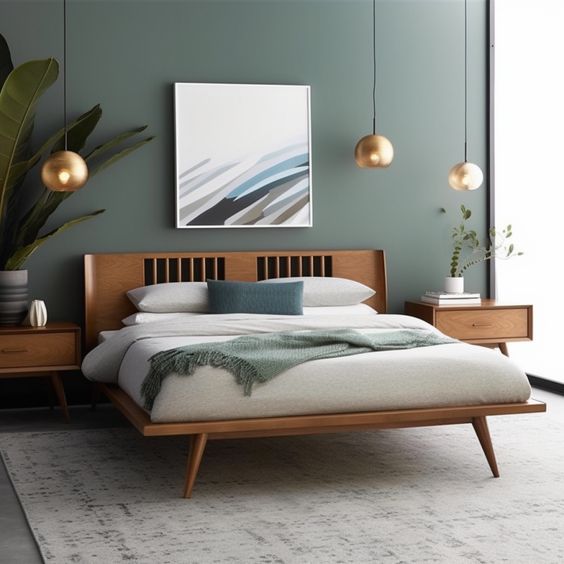
Source: axxla.com
Advantages Mid Century Modern Design
Mid Century Modern design, characterized by its clean lines, functional form, and timeless aesthetic, offers a range of advantages that continue to make it a popular choice for homeowners and designers. Here are some of the key advantages of Mid Century Modern design:
1.Timeless Appeal:
Mid Century Modern design has proven to be enduringly popular since its inception in the mid-20th century. Its clean lines and minimalist aesthetic contribute to a timeless appeal that transcends passing design trends.
2.Clean and Uncluttered Look:
The emphasis on clean lines and minimalism creates a clutter-free and uncluttered look. This design approach fosters a sense of openness and simplicity, making spaces feel inviting and well-organized.
3.Versatility in Integration:
Mid Century Modern elements can be seamlessly integrated into various design styles. Whether you have a contemporary, traditional, or eclectic interior, incorporating Mid Century Modern furniture or decor can add a touch of sophistication without conflicting with the existing style.
4.Focus on Functionality:
Mid Century Modern design prioritizes functionality without sacrificing style. Furniture pieces are often designed with a purpose, offering practical solutions while maintaining an aesthetic appeal. This functional approach is especially beneficial for modern lifestyles.
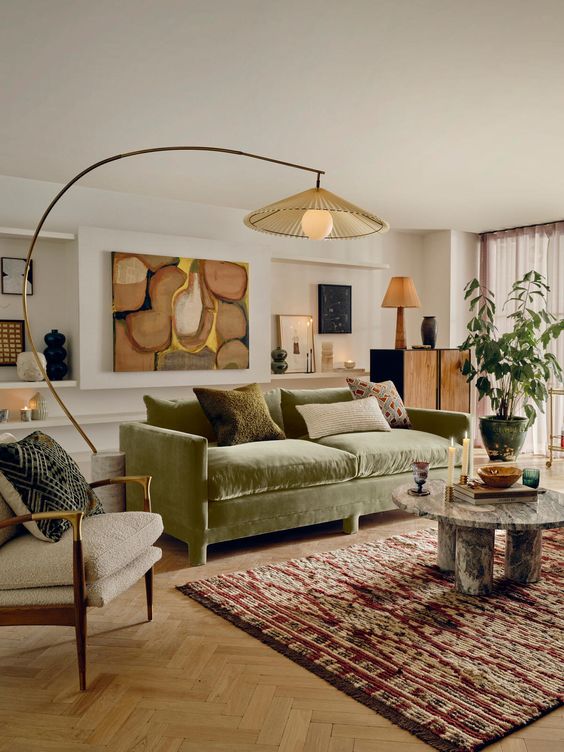
Source: komal design’s
5.Connection to Nature:
Many Mid Century Modern designs emphasize a connection to nature. Large windows, open floor plans, and the use of natural materials like wood contribute to a harmonious integration of the indoors with the outdoors, creating a tranquil and inviting environment.
6.Innovative Use of Materials:
Mid Century Modern designers were known for their innovative use of materials. From molded plastics to fiberglass and metal, the era saw the introduction of unconventional materials that added a modern and futuristic touch to furniture and decor.
7.Iconic Furniture Pieces:
The era produced iconic furniture pieces that have become design classics. Pieces like the Eames Lounge Chair, Saarinen Tulip Table, and Barcelona Chair are not just functional; they are also considered works of art, adding a touch of luxury to interiors.
8.Adaptability to Small Spaces:
Mid Century Modern design is well-suited for smaller spaces. The focus on clean lines and functionality allows for efficient use of space, making it an ideal choice for apartments, condos, or homes with limited square footage.
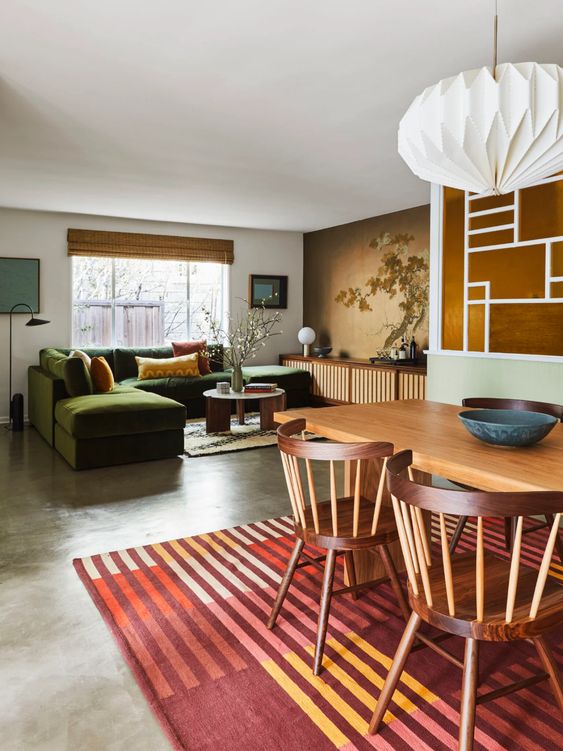
Source: stylemilyhenderson.com
9.Minimal Maintenance:
The simplicity of Mid Century Modern design often translates into minimal maintenance. The use of durable materials like teak and the absence of intricate details make it easier to clean and maintain furniture and decor pieces.
10.Balanced Aesthetic:
Mid Century Modern design achieves a balanced aesthetic. It successfully marries form and function, creating spaces that are visually appealing while serving practical purposes. This balance contributes to a comfortable and inviting atmosphere.
11.Affordable Reproductions:
While original Mid Century Modern pieces can be collector’s items and come with a hefty price tag, there are many affordable reproductions available. This accessibility allows a broader range of people to enjoy the style without compromising on quality.
12.Customization and Personalization:
Mid Century Modern design allows for customization and personalization. Whether through DIY projects, upcycling, or choosing unique accessories, homeowners can put their own spin on the design, making it a reflection of their personal style.
Conclusion
As we conclude this deep dive into Mid Century Modern Interior Design, take a moment to celebrate the enduring appeal of this iconic style. From its historical roots to practical tips for implementation, Mid Century Modern design stands as a testament to the power of timeless elegance in shaping our living spaces. In the world of design, Mid Century Modern isn’t just a style; it’s a canvas for personal expression. Whether you’re drawn to the clean lines, the functionality, or the vibrant colors, take the principles of Mid Century Modern design and make them your own. Let this guide be the starting point for a journey of creating a living space that reflects your unique taste and stands the test of time.

About Author ankitha kelkar
You May Also Like…
The Ultimate Guide to Small Modular Kitchen Designs in 2024
A brief overview of Small Modular Kitchen DesignThe space...
Top 10 TV Unit Designs to Enhance Your Home Interiors
Television unit designs have changed in response to changing...
